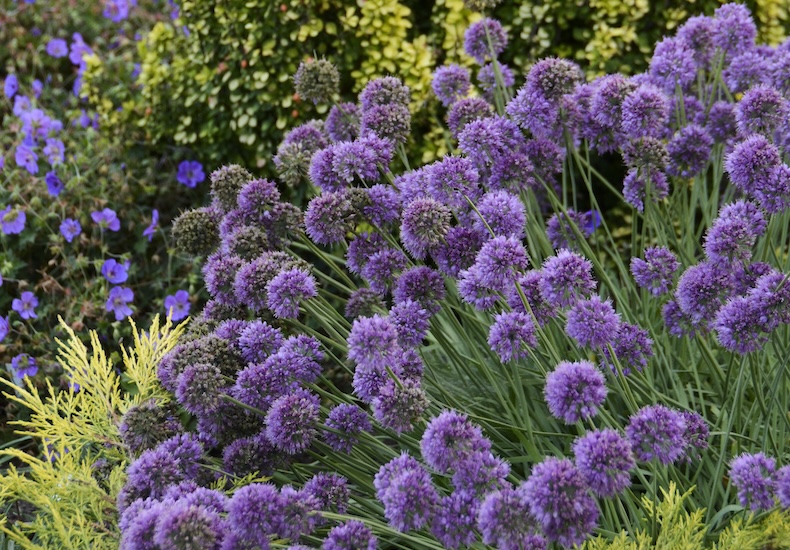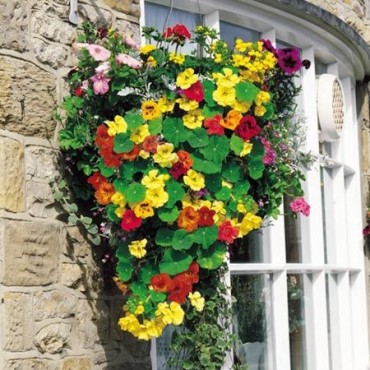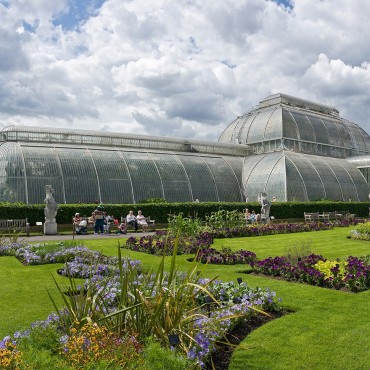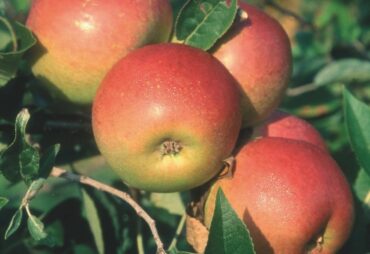Allium bulbs, also known as ornamental onions, throw up striking round flower heads that create structure and drama from late spring to early summer. Even when flowering is over, the attractive seedheads continue to lend interesting texture to your planting display. We asked experienced gardener Carol Bartlett for her advice on growing ornamental alliums. Here are her tried and tested tips…
Browse our full range of allium bulbs for inspiration.
Best allium bulbs for beds, borders and containers
No early summer border is complete without the stand-out purple blooms of the allium flower. They add structure, height and striking layers of colour with giant flower heads that regularly span 15cm across. Tall varieties such as allium ‘Globemaster’ can reach 80cm high while ‘Purple Sensation’ grows to 100cm.
One of my favourite varieties is allium ‘Christophii’ with its large, mauve, sparkler-like heads made up of tiny stars. This slightly shorter allium grows to around 60cm, and the architectural outline of the flower heads continues to look great as they fade. Similar in height, but even more unusual looking, allium ‘schubertii’ has dozens of tiny mauve flowers spiralling out from the centre to give it a dramatic appearance. Flowering from March until the end of May, it’s ideal for containers.
Another good container variety is allium amplectens ‘Graceful Beauty’ which reaches around 30cm tall and has large white flowers with a delicate touch of pink. Although mauve is the traditional colour of alliums – from light lilac to rich purple – the range extends to blue, white and even yellow. Allium caeruleum ‘Blue Drumstick’ is a compact blue variety that works well in pots.
All alliums are attractive to bees, but none more so than allium schoenoprasum (commonly known as chives). Just a small clump of these edible ornamentals acts as a bee magnet! All chives are low-growing, ideal for fronts of borders, rockeries, small containers and mixing in the herb garden. If you cut them back during the summer you’ll be rewarded with a second flush of foliage and flowers.
And for late-summer and autumn colour, plant allium ‘sphaerocephalon’. This tall variety with dark purple flower heads looks especially good alongside late-flowering perennials like crocosmia ‘lucifer’ and autumn grasses like Stipa tenuissima.
Where to plant ornamental alliums
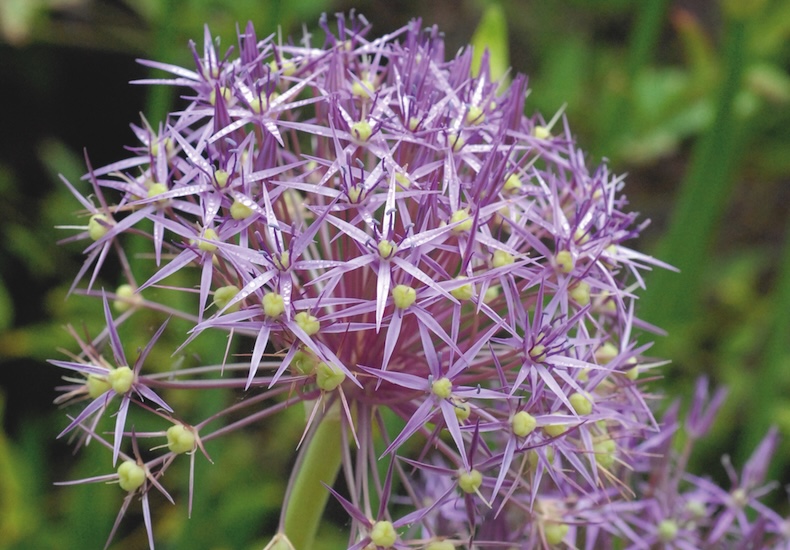
Also known as Star of Persia, Allium christophii produces flower heads up to 20cm across
Image: Allium christophii from Suttons
All alliums have similar growing requirements. They like full sun (preferably around 6 hours) and well-drained soil with no winter wet. Alliums are fully hardy, but if planted in wet soil the bulbs may rot and fail to return the following year.
For the best results, alliums should be planted in groups rather than spotted around. I recommend planting them in groups of 3, 5 or 7 and repeating these groups in two or three places around the garden. It’s tempting to put taller alliums at the back of a border, but this can look a bit contrived and I prefer to mix up the planting.
The only downside to growing alliums is that the foliage can look frayed early in the growing season. To overcome this, grow them amongst foliage companion plants that provide plenty of cover. Alchemilla mollis is a good choice – the abundance of foliage and frothy lime green flowers contrast well with alliums’ purple flower heads. Hostas are another good partner.
For taller alliums, the bright green foliage and yellow bracts of euphorbia palustris offer an interesting contrast. Red and orange varieties of Geum also make good companions.
How to plant allium bulbs
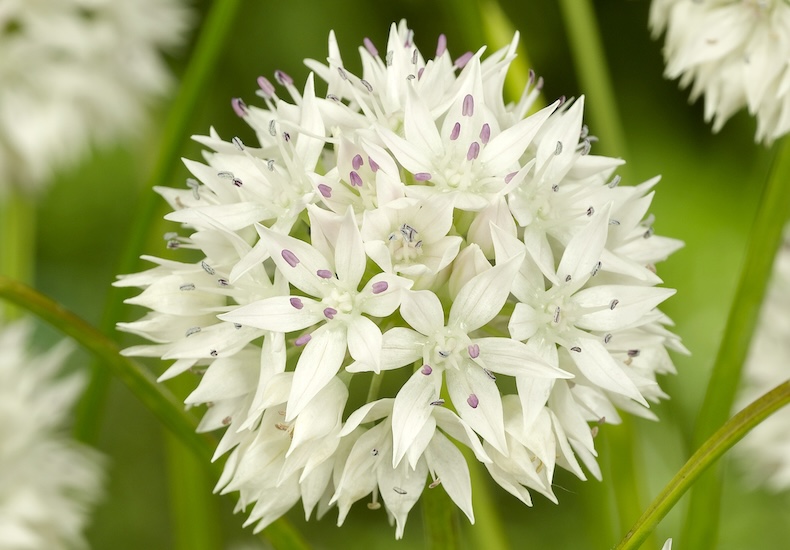
This compact variety is good for the front of borders and patio containers
Image: Allium amplectens ‘Graceful Beauty’ from Suttons
The best time of year to plant allium bulbs is autumn – especially September and October. A good rule of thumb for planting any bulbs, including alliums, is to plant them at 3 x the depth of the size of the bulb. Naturally this means that smaller allium bulbs, like chives, will be only a few centimetres deep whereas the large globemaster bulbs, which can be as large as 20cm, will be planted at least 60cm deep. It’s important not to plant allium bulbs too shallow, as the depth helps to anchor the bulb against gusty wind.
Space your bulbs 10-20cm apart, depending on their size. Bigger bulbs need more space to allow the bulb to develop and produce a large flower head.
How to care for ornamental alliums
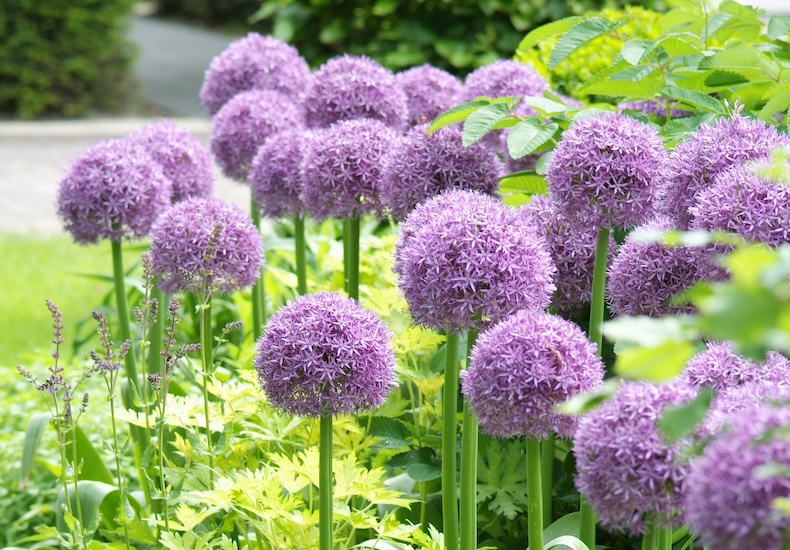
These magnificent lilac blooms add the ‘wow’ factor to borders and vases
Image: Allium ‘Globemaster’ from Suttons
One of the benefits of growing alliums is that, once planted in the right place, they will grow unattended and maintenance-free for many years. Whilst the bulbs dislike winter wet, the upside is that they’re drought-tolerant. I’ve never had to water my alliums. Even if there’s a summer drought, it’s usually followed by some autumn rains to compensate. Equally, if alliums are growing on reasonable soil it’s not necessary to feed them. Only feed those that are growing in thin or poor soil.
If your alliums become congested, you might want to divide them. The frequency will vary, depending on growing conditions. In ideal growing conditions, the bulbs will multiply more readily and may need dividing every 4-5 years. In less favourable conditions, they will bulk up more slowly. Division is easy. After the plant has finished flowering and the leaves have died back, dig up the clump and separate the bulbs into two or three sections before replanting.
Avoiding common problems
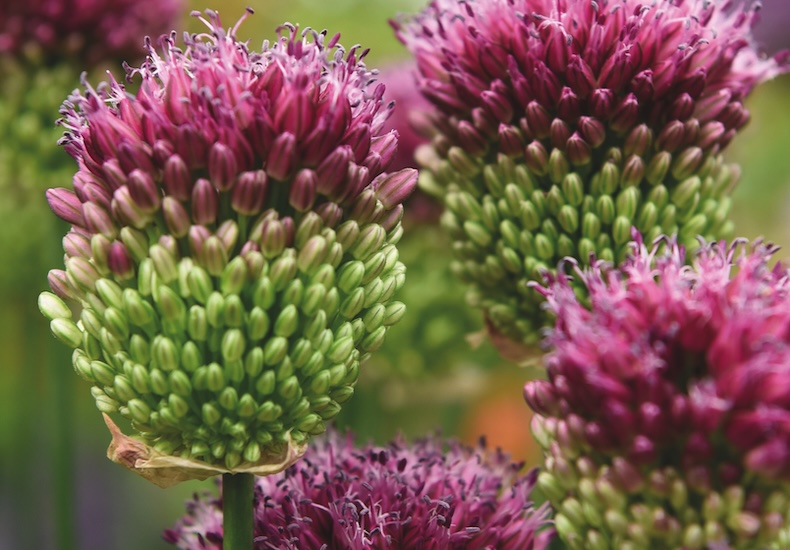
These beautiful allium heads look fantastic en masse amongst grasses
Image: Allium sphaerocephalon from Suttons
There are mixed views on the need to stake alliums. The decision probably depends on the variety you’re growing and where in the country you’re gardening. I recommend staking the taller varieties, especially if your garden is prone to gusty winds.
Alliums are generally trouble-free, despite the long list of diseases which can attack the onion family. Rust is the most common problem and you can spray against it or, if gardening organically, simply remove infected foliage. The best way to avoid rust is not to plant the bulbs too close together.
To ensure alliums bloom well year after year, plant at the correct depth. If the bulbs are too shallow, your alliums may not bloom. It’s also important to leave the foliage in place so it dies down naturally. This allows the plant to photosynthesis and feed the bulb for the next year.
Planted at the right depth and in the right place, you can enjoy the stunning blooms of alliums year after year with minimal maintenance. The bees and butterflies will thank you too! Read our guide to growing spring bulbs for more helpful information.
Lead image: Allium bulbs from Suttons
Last Updated on September 15, 2025 by Suttons Horticultural Team

